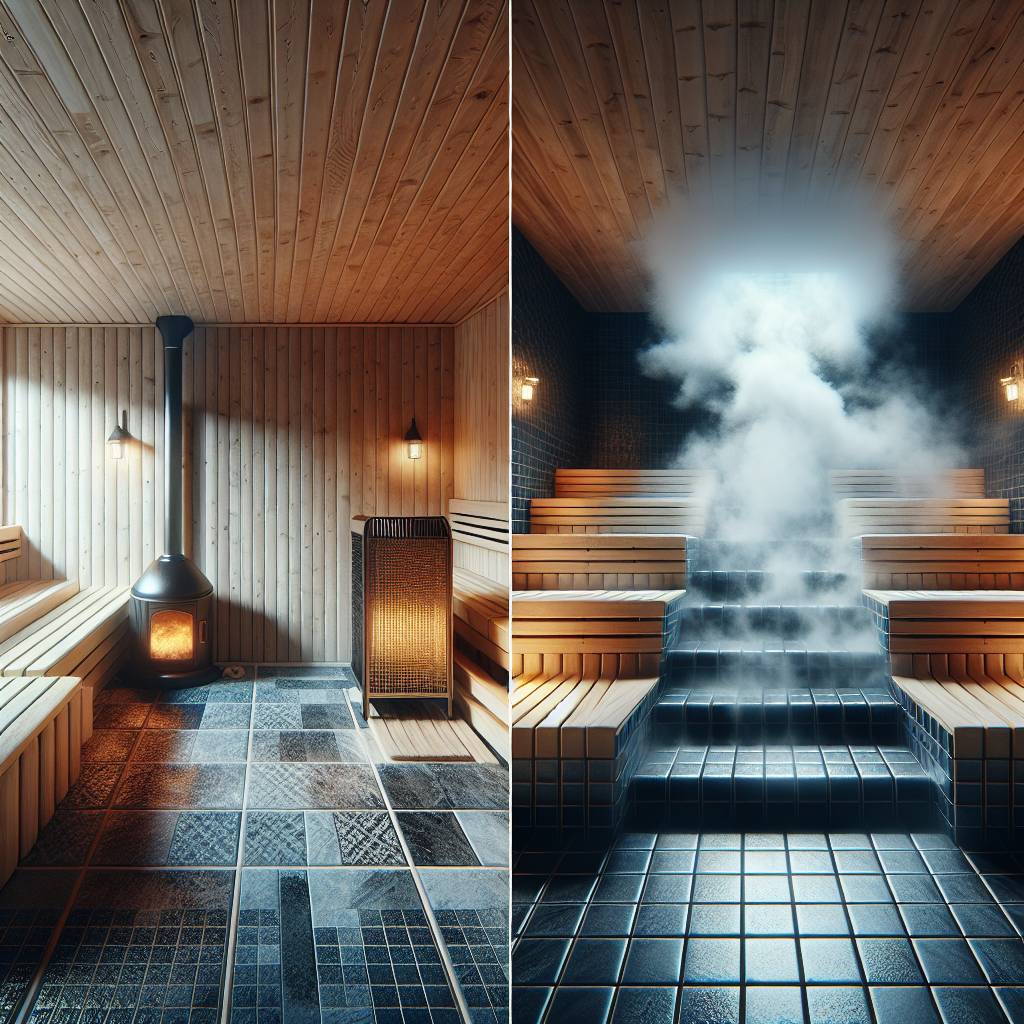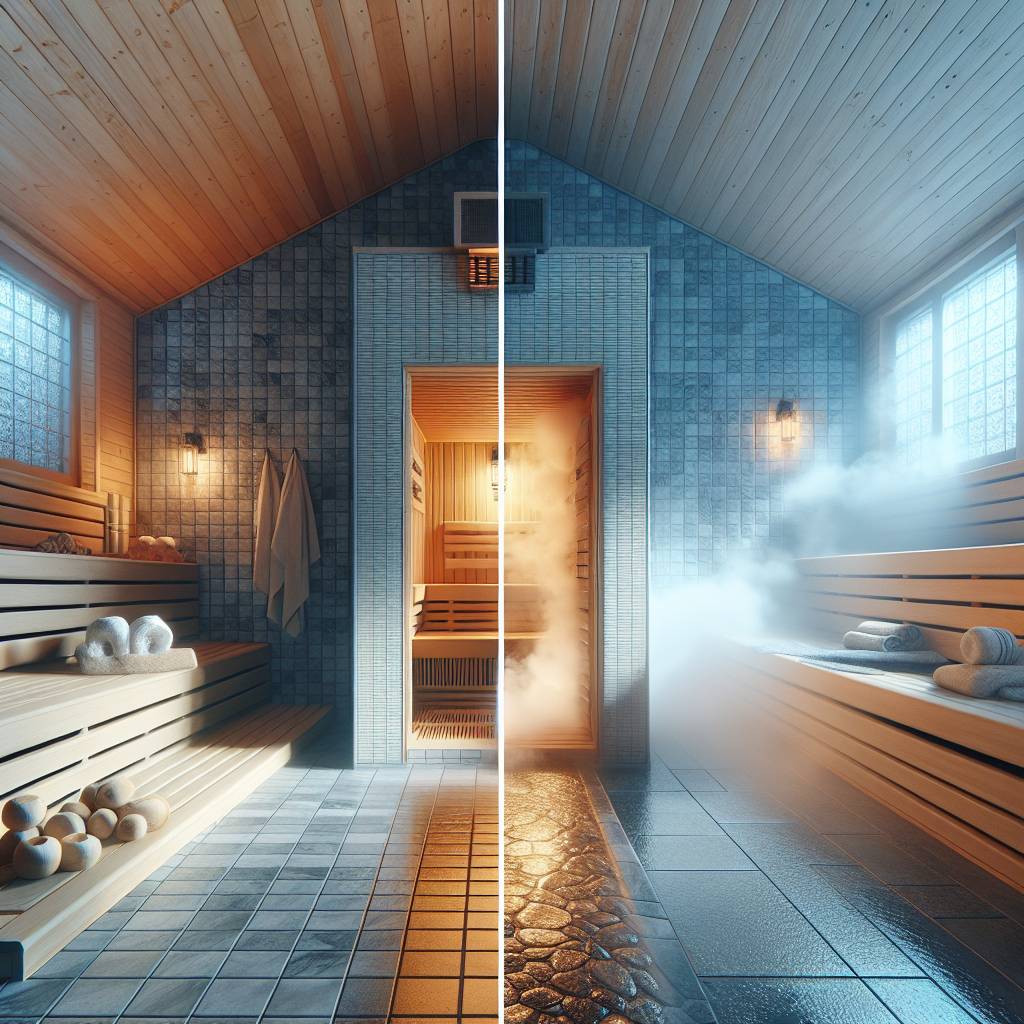Exploring the pricing and heater disparities between electric and infrared saunas reveals significant variations in initial investment, operational expenses, and long-term savings. While electric saunas often require higher upfront costs due to installation complexities and power consumption, infrared models offer a more budget-friendly alternative with lower installation expenses and energy efficiency. Understanding these distinctions can help individuals make informed decisions based on their budget constraints and sustainability preferences. By delving into the nuances of cost differences between these sauna types, individuals can identify the most financially viable option that aligns with their needs and financial objectives.
Key Takeaways
- Consider Your Needs: Understand the differences between electric and infrared saunas to choose the type that best fits your lifestyle and preferences.
- Calculate Upfront and Ongoing Costs: Compare initial purchase prices and long-term operating expenses to make an informed decision on which sauna is more cost-effective for you.
- Monitor Usage Patterns: Be aware of factors like frequency of use, energy rates, and insulation to estimate and manage your sauna’s running costs efficiently.
- Plan for Additional Expenses: Factor in maintenance, accessories, and installation costs when budgeting for your sauna to avoid unexpected financial burdens.
- Optimize Efficiency: Implement energy-saving practices like proper insulation, efficient heaters, and regular maintenance to reduce overall operating expenses.
- Seek Professional Advice: Consult with experts or manufacturers to get personalized recommendations on cost-effective sauna options based on your specific needs and budget constraints.
Understanding Sauna Types
Electric Saunas
Electric saunas are known for their energy efficiency. They consume less power compared to traditional saunas, making them cost-effective. The energy consumption rates vary based on the model, with some newer models being more energy-efficient than older ones.
When comparing electric saunas to other types, they stand out for their quick heating capabilities. Electric saunas can reach the desired temperature faster, allowing users to enjoy a relaxing session promptly. This feature is particularly appealing for those with busy schedules or limited time for sauna sessions.
One of the unique features of electric saunas is their precise temperature control. Users can easily adjust the temperature settings according to their preferences, ensuring a comfortable and personalized sauna experience. This level of control enhances the overall enjoyment and effectiveness of the sauna session.
Infrared Saunas
Infrared saunas utilize infrared light waves to heat the body directly instead of heating the air around the user. This technology makes them more energy-efficient than traditional saunas, resulting in lower energy consumption. The specific energy consumption range of infrared saunas varies depending on the size and model.
Compared to electric saunas, infrared saunas offer gentler heat that penetrates deeper into the skin, promoting various health benefits. The heat from infrared saunas helps relax muscles, improve circulation, and detoxify the body through sweating. These benefits make them a popular choice for individuals seeking therapeutic effects from sauna sessions.
Using an infrared sauna is associated with several health benefits, including pain relief, improved circulation, and relaxation. The deep heat generated by infrared waves can help alleviate muscle soreness, reduce inflammation, and promote overall well-being. Many users find regular sessions in an infrared sauna beneficial for both physical and mental health.
Initial Costs Comparison
Buying Price
Electric saunas typically have a higher average cost upfront compared to infrared saunas. The average price for an electric sauna can range from $1000 to $6000, while an infrared sauna usually costs between $1000 and $5000. Factors such as size, materials, and additional features significantly influence the average buying price of both sauna types. To keep costs in mind, consider opting for a smaller size or basic models without extensive add-ons.
When purchasing a sauna, it’s essential to factor in the average cost of delivery and assembly. Some suppliers include these services in the overall price, while others charge extra. The quality of materials used in construction can impact the final price. To ensure you’re getting value for money, compare prices from different manufacturers and look for affordable yet durable options.
Installation Fees
The average installation fees for electric saunas can range from $300 to $1500, depending on the complexity of the setup. In contrast, infrared saunas generally have lower installation costs, ranging from $200 to $1000. The simplicity of infrared sauna designs often results in more straightforward installations, reducing labor expenses.
Installation fees can vary based on several factors, including the location of the sauna within your home, electrical requirements, and any additional modifications needed for proper ventilation. Opting for a DIY installation can help save on labor costs; however, it’s crucial to follow manufacturer guidelines carefully to ensure safety and efficiency.
To minimize installation expenses, consider purchasing a pre-fabricated sauna kit that comes with detailed instructions for easy assembly. Some companies offer professional installation services at competitive rates, providing a convenient and cost-effective option for those not comfortable with DIY projects.
Operating Costs Overview
Electricity Usage
Electric saunas typically consume more electricity compared to infrared saunas due to their heating mechanisms. Infrared saunas utilize infrared panels that directly heat the body, requiring less energy than traditional electric saunas. Energy prices significantly impact overall operating costs for both sauna types. Higher electricity rates can lead to increased expenses when using electric saunas, especially in regions with expensive energy tariffs.
When considering energy-efficient sauna models, individuals can opt for infrared saunas with low EMF (Electromagnetic Field) emissions. These models are designed to operate efficiently while minimizing electricity consumption. Sauna manufacturers such as Sunlighten and Clearlight offer energy-efficient infrared saunas that prioritize performance while reducing energy usage.
Maintenance Needs
Maintaining electric and infrared saunas is crucial for ensuring longevity and optimal performance. Electric saunas require regular cleaning of heating elements and controls to prevent malfunctions. Periodic inspections of electrical components are necessary to identify any issues early on and prevent potential hazards. In contrast, infrared saunas have fewer maintenance needs due to their simpler design.
Common maintenance tasks for electric saunas include checking and replacing heating elements, inspecting wiring for damage, and cleaning vents to ensure proper airflow. On the other hand, maintaining infrared saunas involves cleaning the infrared panels regularly and inspecting the carbon heaters for any signs of wear or damage. Regular maintenance not only extends the lifespan of the sauna but also ensures a safe and enjoyable experience for users.
To prolong the lifespan of both electric and infrared saunas, it is essential to follow manufacturer guidelines for maintenance and care. Proper ventilation is crucial for preventing moisture buildup, which can lead to mold growth and damage internal components. Using sauna-friendly cleaners and avoiding harsh chemicals can help preserve the sauna’s integrity over time. By investing time in routine maintenance, sauna owners can enjoy their units for years to come.
Factors Affecting Running Costs
Sauna Size
The size of a sauna plays a crucial role in determining its energy consumption and operating costs. Larger saunas require more energy to heat up the space, leading to higher running costs. On the other hand, smaller saunas are more energy-efficient as they heat up quickly and maintain temperature with less power usage.
When considering sauna size, it’s essential to weigh the pros and cons. Larger saunas provide more space for multiple users and a luxurious experience but come with higher operating expenses. In contrast, smaller saunas are cost-effective and ideal for personal use or smaller groups.
To choose the right sauna size, individuals should assess their needs and preferences. Those seeking a communal experience may opt for larger saunas despite higher costs, while individuals prioritizing efficiency and cost savings may prefer compact sauna models.
Frequency of Use
The frequency of sauna use significantly impacts its energy consumption and overall running costs. Regular use of the sauna results in higher electricity bills due to increased heating cycles. Infrequent use, on the other hand, allows for energy conservation and cost reduction.
Balancing regular sauna use with cost-effectiveness requires strategic planning. Users can schedule sauna sessions based on their needs while being mindful of energy consumption. For example, limiting daily sauna sessions or sharing sessions with family members can help manage running costs effectively.
To optimize sauna usage for cost savings, individuals can implement various strategies. These include pre-heating the sauna only when needed, using timers to control heating periods, and ensuring proper insulation to retain heat efficiently. By adopting these practices, users can enjoy the benefits of saunas while minimizing operational expenses.
Calculating Your Sauna Expenses
Running Cost Calculator
To accurately estimate the running costs of electric and infrared saunas, utilize online tools or consult with sauna manufacturers. These resources can provide detailed insights into the electricity consumption and operational expenses. Calculate your monthly or yearly operating expenses by considering the power rating of your sauna and the average electricity rates in your area.
One method for estimating running costs is to multiply the sauna’s power rating (in kilowatts) by the number of hours you plan to use it each month. Then, multiply this by the cost per kilowatt-hour of electricity. This calculation will give you an approximate idea of your monthly electricity expenses.
When calculating running costs, remember to include all relevant factors such as heating time, insulation quality, and additional features like lighting or sound systems. These elements can significantly impact your overall operational expenses.
Tips for Accuracy
For accurate estimates of sauna ownership costs, consider factors like local electricity rates, frequency of use, and maintenance requirements. These aspects can influence the total cost of owning a sauna over time.
Factors that may affect the accuracy of your cost estimates include variations in electricity prices, seasonal usage patterns, and any upgrades or modifications made to the sauna. Be mindful of these variables when budgeting for your sauna expenses.
To account for potential hidden costs when budgeting for a sauna purchase, allocate funds for maintenance, repairs, and any unforeseen issues that may arise. It’s essential to have a financial cushion to cover unexpected expenses and ensure the longevity of your sauna investment.
Reducing Sauna Expenses
Efficient Use Tips
To maximize energy efficiency when using regular sauna, consider preheating the sauna for shorter durations. Utilize timers to ensure the sauna is only on when needed. Sealing any air leaks around doors and windows can prevent heat loss.
Implementing energy-saving practices such as using lower temperatures or sharing sauna sessions with others can reduce energy consumption significantly. These strategies not only save money but also promote sustainability and environmental consciousness.
Adopting energy-efficient habits in sauna usage not only lowers utility bills but also extends the lifespan of the sauna unit. By being mindful of energy consumption, users can enjoy the benefits of saunas without incurring high costs.
Maintenance Advice
For electric saunas, it’s crucial to regularly check and replace any faulty heating elements to maintain optimal performance. Cleaning the heating elements and control panels can prevent malfunctions and ensure efficient operation over time.
Infrared saunas require periodic cleaning of the infrared panels to remove dust and debris that may affect their effectiveness. Checking the electrical connections and controls is essential to address any issues promptly and avoid costly repairs.
Regular maintenance is key to preserving the functionality of both electric and infrared saunas. Troubleshooting common problems like uneven heating, unusual odors, or malfunctioning controls can prevent larger issues from arising.
Additional Costs to Consider
Repair and Upkeep
Electric and infrared saunas may require repairs over time. Common issues include heating element malfunctions and electrical problems. Regular maintenance can prevent costly repairs.
Identifying the need for repairs is crucial. Signs such as inconsistent temperature, strange noises, or unusual smells indicate potential issues. Addressing problems promptly can prevent further damage.
Finding reliable professionals for sauna repairs is essential. Seek certified technicians with experience in sauna maintenance. Research reviews and ask for recommendations to ensure quality service.
Upgrades and Accessories
Both electric and infrared saunas offer a range of upgrades and accessories. Options include chromotherapy lighting, sound systems, and aromatherapy diffusers. These enhancements can elevate the sauna experience.
Upgrades not only enhance comfort but also improve efficiency. For example, adding insulation can help retain heat, reducing energy consumption. Upgraded controls can provide customized settings for optimal performance.
Essential accessories for sauna owners include hygrometers to monitor humidity levels and cleaning supplies for maintenance. Investing in a good-quality bench and comfortable seating can enhance relaxation.
Making a Cost-Effective Decision
Evaluating Needs
When considering a sauna purchase, assess your specific needs to determine the most suitable option. Consider factors like space availability, intended usage frequency, and desired sauna experience. Evaluate whether you prioritize convenience or health benefits.
To make an informed decision, create a checklist to evaluate your requirements and preferences. Determine if you prefer quick heat-up times or lower energy consumption. Consider if you want customizable features like lighting options or music connectivity in your sauna setup.
Comparing Options
In comparing electric and infrared saunas, it’s essential to look at cost and features. Electric saunas typically have a higher upfront cost due to installation requirements, while infrared saunas are more budget-friendly and easier to set up. Consider your budget constraints carefully.
The key differences between electric and infrared saunas lie in their heating methods. Electric saunas use traditional heaters that warm the air inside the unit, while infrared saunas use infrared heaters that directly heat the body. Evaluate your priorities based on heat distribution, energy efficiency, and overall comfort.
Pros and Cons
Electric Saunas:
- Pros:
- Provide consistent heat throughout the sauna session.
- Allow for customization with various temperature settings.
- Cons:
- Higher initial cost due to installation requirements.
- May lead to increased energy consumption over time.
Infrared Saunas:
- Pros:
- More cost-effective upfront with easier installation.
- Heat the body directly for a deeper sweat experience.
- Cons:
- Limited temperature control compared to electric saunas.
- Require longer preheating times before use.
Consider these aspects when deciding between electric and infrared saunas to ensure you select the option that best fits your needs and budget.
Final Remarks
By now, you have gained a comprehensive understanding of the cost disparities between electric and infrared saunas. Calculating your expenses and considering the various factors influencing running costs have provided you with valuable insights into making an informed decision. To ensure a cost-effective choice, focus on reducing unnecessary expenses and prioritizing long-term savings.
As you navigate the realm of sauna costs, remember that the key lies in balancing upfront investments with ongoing operational expenditures. Make a conscious effort to optimize your usage and maintenance routines to maximize efficiency and minimize financial outlays. Armed with this knowledge, you are well-equipped to select the sauna option that aligns best with your budget and preferences. Stay mindful of these cost-saving strategies as you embark on your sauna journey.
Frequently Asked Questions
What are the different types of saunas mentioned in the blog post?
**** The blog post discusses electric and infrared saunas. Electric saunas use traditional heating methods, while infrared saunas utilize infrared heaters for a more direct heat experience.
How do initial costs compare between electric and infrared saunas?
**** Initial costs for electric saunas are generally lower compared to infrared saunas due to simpler technology and installation requirements.
What factors influence the running costs of electric and infrared saunas?
**** Factors like electricity rates, usage frequency, sauna size, and insulation quality can impact the operating costs of both electric and infrared saunas.
How can one calculate their sauna expenses based on the information provided in the blog post?
**** By considering initial costs, operating costs, and additional expenses detailed in the blog post, individuals can accurately calculate their overall sauna expenses over time.
What tips are provided in the blog post for reducing sauna expenses?
**** The blog post offers insights on reducing sauna expenses through energy-efficient practices, proper maintenance, and smart usage habits to optimize cost-effectiveness.






